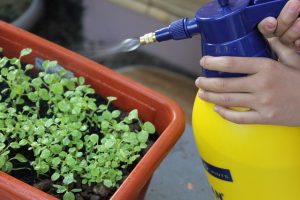It is important to know what to do with indoor plants when you move. So that you can transport your leafy friends with the least shock to them. You should know in advance that the extraordinary fragility of flowers, shrubs, and seedlings makes their successful relocation quite a challenge. Take advantage of our advice on how to pack your plants for moving to keep their beauty and joy as long as possible.
What to consider before you pack your plants for moving
Before moving to Florida you need to know many important things. Those are useful guidelines that will help you safely transport plants and even young trees to your new home.
Move or not move your plants?
The question of whether you should even try to overcome difficulties in moving certain plants is the first. Even before you figure out how exactly you will move your house plants base your final decision on several important factors, such as:
Sentimental value
How much you are attached to some of your plants will likely affect your decision to take them with you or not. After many years of loving care, sometimes leaving priceless plant species is simply not an option. You don’t care what you need to pack your plants for moving or for safe transportation.

Climatic conditions
The regional climate and soil type in the area where you are going to move with the plants is also an important factor to consider before deciding. Think about whether it is justifiable to expose your expensive plants to adverse conditions with a lower chance of survival. Especially if they feel great exactly where they are now.
Season
When is the best time to move plants? This is another important thing to consider when moving indoor plants. The best time to move plants is early spring or late fall. That’s when most plants are inactive and tend to adapt to new conditions much faster. Moreover, moving during the fall brings you climatic conditions ideal for moving plants to a new home. The weather is usually mild and the temperature is quite moderate.
Fragility
You must not forget that indoor plants fall into the category of the most difficult to move because of their exceptional fragility and unsurpassed delicacy. If you decide to take some of your plants to your new residence, be prepared to devote a lot of time and care to prepare your plants for moving.
How to prepare plants for moving
Having already decided to move some of your specific plants, shrubs, or young trees with you, it is time to radically increase their chances of survival using proper plant preparation methods. Our moving preparation tips for plants, shrubs, and trees include practical tips on what to do with indoor and outdoor plants before moving with Pembroke Pines movers.
3 weeks before moving day
If necessary, transfer all plants in clay pots to strong plastic containers of approximately the same size. This is the right time to prune your plants. Remove any fallen leaves, excess foliage or unnecessary branches. So that the packing and transportation processes are not only more manageable but also much safer.

3 days before the day of moving
If you move in winter, water the plants for the last time until they reach a safe place in your new home. Prepare suitable packing boxes and align their bottoms and sides with plastic sheets for added protection. Make several holes the size of a coin on the lid and on the sides of each box for sufficient air circulation inside the container. Take the black marker pen and write “FRAGILE PLANTS” and “THIS SIDE UP” on at least two sides of each moving box.
1 day before the move
If you are moving during summer, water the plants well in the morning. It’s time to dig up garden plants, shrubs or small trees that you decide not to part with. The most difficult task when digging up plants is to keep their root systems intact. Water the plant just before you try to take it out. And then dig a wide round area to pull out the entire root ball. A proven method is to use a shovel and cut out the perfect ring around the stem just below the drip line.
When taking out a plant, be careful to preserve not only the thick roots of plants but also thinner ones. After pulling it, wrap the entire root ball in a plastic bag, soil and everything. And make sure that there is always enough moisture until the plants are replanted. If you move indoor plants in cold weather, consider wrapping the roots with another layer of bubble pack.
How to pack your plants for moving
It is time to pack your plants for relocation. Or, in other words, it’s a moving day!
- Wrap each clay pot that you haven’t replaced for one reason or another in one layer of wet packing paper. And then put a few more layers of dry paper over it. Plastic pots do not need moisture, so wrap them only in dry paper.
- For each plant in the pot, make a hard paper protective sleeve that matches the height of the plant and the diameter of its pot. Carefully place the protective funnel on the plant and stick it well.
- Place wrapped plants of the same size in the appropriate moving boxes, leaving enough space between the tallest plant and the container lid.
- Pack the pots as close as possible. And then use plenty of shredded paper to fill the holes around the pots to prevent unwanted contact during actual transportation.
- Close the covers and seal them with foil. If you cannot close any covers tightly, just fasten them in place. Thanks to the ventilation holes that you have already made on the containers, your plants will not need to hold their breath on the road.
- If you pack your plants for moving properly, your valuable plants should survive on the road for up to 2 days.







